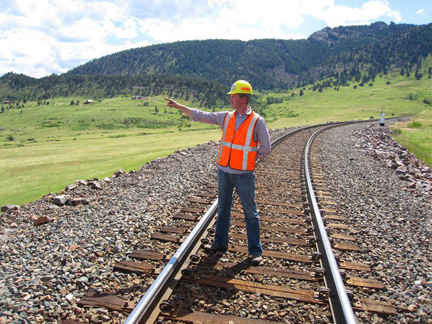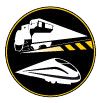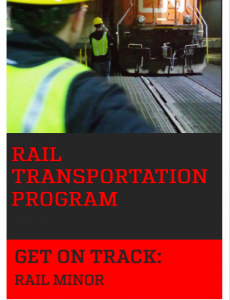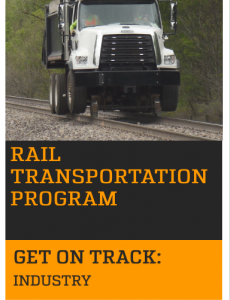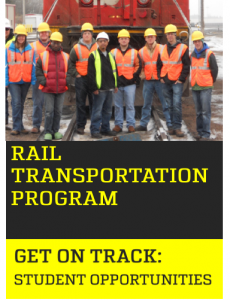Tom graduated with a bachelor’s degree in Electrical Engineering in 2008. He is currently the Assistant Manager of Methods and Research with Union Pacific Railroad in Omaha, Nebraska. Tom’s career with Union Pacific began with a co-op from June to December of 2006. He was hired as a full-time employee in August of 2008.
“My first involvement in rail was through MTU’s “Summer in Finland” rail education study abroad program. At the time, my professional interests lied elsewhere, but I welcomed the opportunity to travel abroad. During the program, I found the course material to be very interesting, and was particularly excited about the opportunities inside the railroad industry for EE’s. Following the program, I received job offers into a co-op program from three railroad companies. I picked Union Pacific because they already had projects lined up for me, all of which had a high “cool-factor”: remote control locomotives and classification yard automation. When I returned to school, I became an officer in MTU’s Railroad Engineering and Activities club, which allowed industry involvement while still in school. Following graduation, job offers came easy since there was a high demand for EE’s in the railroad industry, and there were very few candidates with railroad-specific experience. I again chose Union Pacific because of my positive experience during the co-op, and advancement opportunities within the organization. Union Pacific, along with most of the other large railroad companies in the US have designed a year-long training program that allows new-hire engineering grads to see and participate in a wide berth of the railroad business. I found the program extremely valuable. The travel and workload were intense, yet my principal responsibility was to learn; not todesign/manage/produce. This was an ideal arrangement, since it allowed the knowledge to soak in.
Some of my favorite experiences during this time included operating a freight train, changing the brushes of a locomotive traction motor, and meeting the faces on the ground that keep the railroad running. Near the end of the program, I began shadowing an engineer responsible for “wayside detectors”: sensors and equipment that monitor passing trains for safety defects, such as out-of-round wheels and overheated wheel bearings. I’ll be taking full responsibility for this position in the near future. The position is particularly exciting because the projects have a multidepartment influence and allow involvement of all project phases, including R&D, construction, and subsequent maintenance.
Because of the railroad industry’s eagerness to embrace new technology such as LIDAR, Machine Vision, Infared Imaging, and much more, a motivated individual in the industry is not only guaranteed to have a stable and rewarding career, but also an interesting one.”
